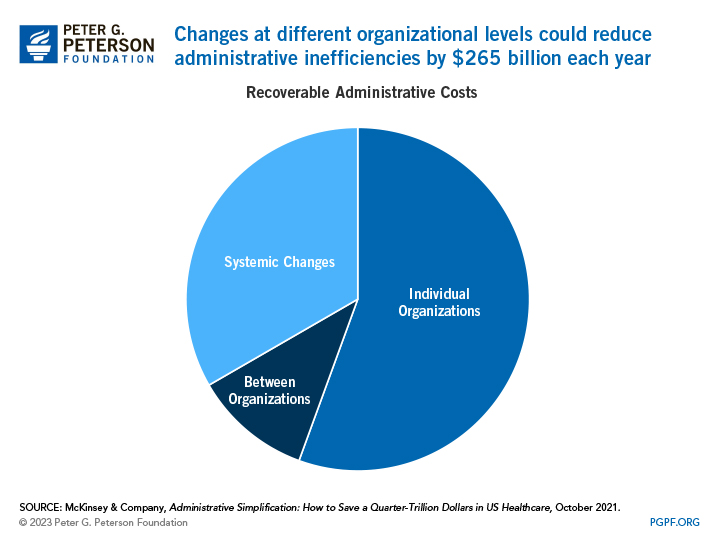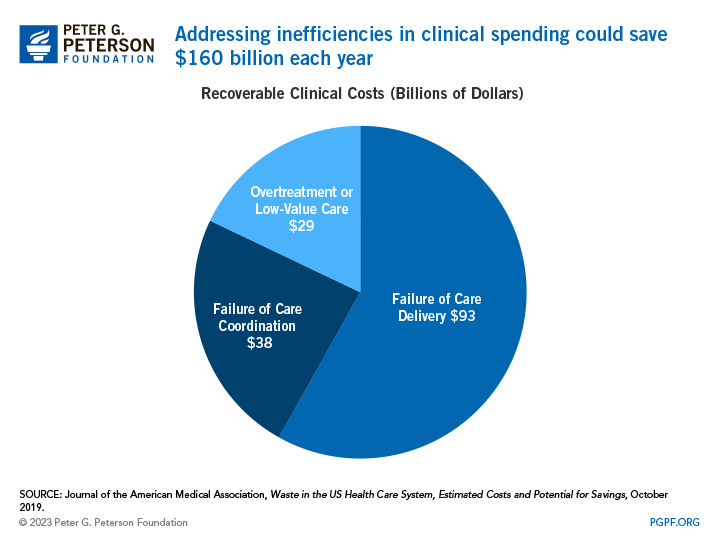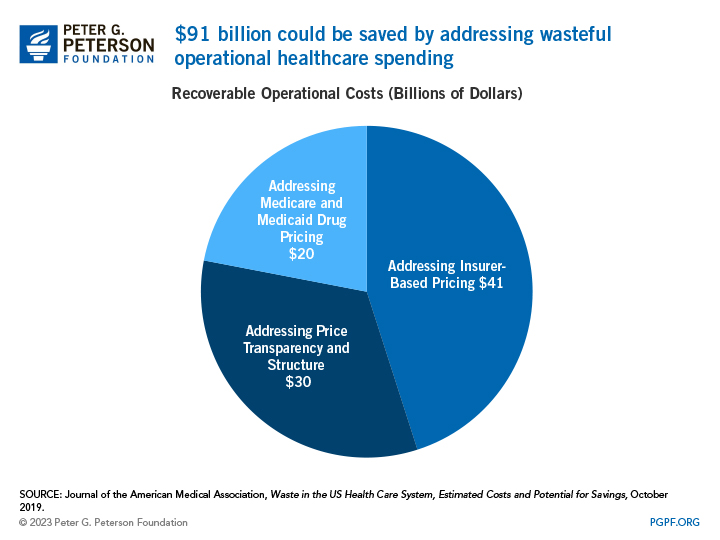It’s no secret that the United States spends an exorbitant amount on healthcare, by far the most in the world. In 2021, US healthcare spending will total $4.3 trillion, averaging about $13,000 per person.
It is also well known that the United States pays huge amounts of money for health care, but does not get what it pays for in terms of outcomes. Many experts point to cutting unnecessary and wasteful health care spending in order to maintain the nation’s budget, economy and overall well-being.
Dr. William Shrank of Humana (a health insurance company) and colleagues estimate that about 25% of healthcare spending is wasted. Of this, an estimated $516 billion could be recovered or saved in three key areas: administrative, clinical and operational.Recent reports Dr. Schrank and Professor at Harvard University David Cutler and McKinsey We outline solutions in each of these three areas that policy makers should consider when considering healthcare savings.
Solutions to reduce medical administration expenditures
The largest source of inefficiency in US healthcare spending is administrative costs, which Schrank estimates totals $351 billion annually. The changes proposed by Cutler and McKinsey & Company could reduce management inefficiencies by $265 billion annually (after accounting for $50 billion in overlapping savings across interventions, the estimates below is not fully additive).
- Individual organizations ($175 billion in savings): Small-scale interventions can be implemented by individual organizations. Options include streamlining the claim submission process, automating repetitive tasks in HR and finance, leveraging new technologies such as analytics and cloud computing, and improving administrative support capabilities.
- Between organizations ($35 billion in savings): Some solutions require collaboration between organizations, such as using compatible criteria for pre-approval (the process by which a patient’s insurer considers treatment or medication needs before approval). Other strategic payer and provider platforms to reduce friction and administrative duplicity also reduce costs (for example, making it easier to find doctors and lowest cost prescription drugs in the network).
- System-wide change ($105 billion in savings): Hospitals and clinics can deploy standard automated clearinghouses to process medical claims and detect fraudulent claims at the same time. Other options include health policy, medical licensing and standardization of reporting quality.

Solutions to reduce clinical expenditure
Schrank and colleagues calculate Inefficient spending on clinical problems costs the US $345 billion annually.Of that total, they estimate that $160 billion in potential savings Through the solution below.
- Addressing care delivery failures ($93 billion in savings): Options in this category include integration of behavioral and physical health ($58 billion), interventions to address nosocomial adverse events and nosocomial infections ($5 billion), and partnerships for patient campaigns ($3 billion). There is also room for significant improvements in prevention efforts to address diseases such as diabetes, obesity and smoking ($26 billion).
- Addressing care coordination failures ($38 billion in savings): Areas of improvement include the coordination of care in responsible care organizations (ACOs) ($13 billion), transitional care programs that facilitate safe discharge to home or other facilities ($9 billion), effective care management for medically complex patients ($8 billion), and emergency department-based strategies such as video consultations and directing patients to appropriate care by primary care physicians and retail clinics ($7 billion).
- Addressing overtreatment and low-value care ($29 billion in savings): Potential savings from optimizing drug use $22 billion annually. Other options include sharing decision-making tactics to reduce unnecessary steps ($3 billion) and expand access to hospice ($3 billion) and improved pre-approval procedures ($250 million), and pioneering ACO strategies to reduce overuse ($200 million).

Solutions to reduce operational healthcare expenditure
Operational problems in the healthcare industry, such as pricing failures and excessive drug spending, cause an estimated $243 billion in waste each year. Through several reform options proposed by Schrank et al. $91 billion of that waste could be recovered.
- Addressing insurer-based pricing ($41 billion in savings): For commercial policyholders, medical costs can vary widely and are typically much higher than what Medicare and Medicaid pay. Fixing such pricing failures by introducing payment reforms that set or limit prices can lead to cost savings.
- Commitment to price transparency and structure ($30 billion in savings): A JAMA study found that patients who used popular medical services pricing websites had lower claims costs. The savings resulting from Save nearly $30 billion annually in healthcare costs.another Recent research Doctors at the University of Minnesota evaluated price transparency rules for hospitals and insurance companies starting in 2019 and found that such rules could lead to savings of up to $81 billion by 2025.
- Addressing drug use and spending ($20 billion in savings): Interventions to address utilization and spending Medicare and Medicaid prescription drug spending could save an additional $20 billion annually. Reforms include the ability to create narrower prescriptions and payment reforms for infusion products administered in an office or outpatient setting. Reforms that address drug pricing are gaining popularity as a way to cut operating expenses, much as the Control Inflation Act did by allowing Medicare to negotiate drug prices. This provision is estimated to save him $102 billion over the next decade.

Conclusion
Health care costs in the United States are already high and are projected to rise further, posing serious risks to the economy, the country’s financial prospects and the health care system’s sustainability. It is important that our leaders consider ways to reduce waste and thereby reduce healthcare costs. The solutions to reduce unnecessary spending described in this blog offer a potential pathway to saving both federal and state governments hundreds of billions of dollars annually.
RELATED: U.S. Healthcare Spending Still High
Image Credits: Mario Tama/Getty Images

